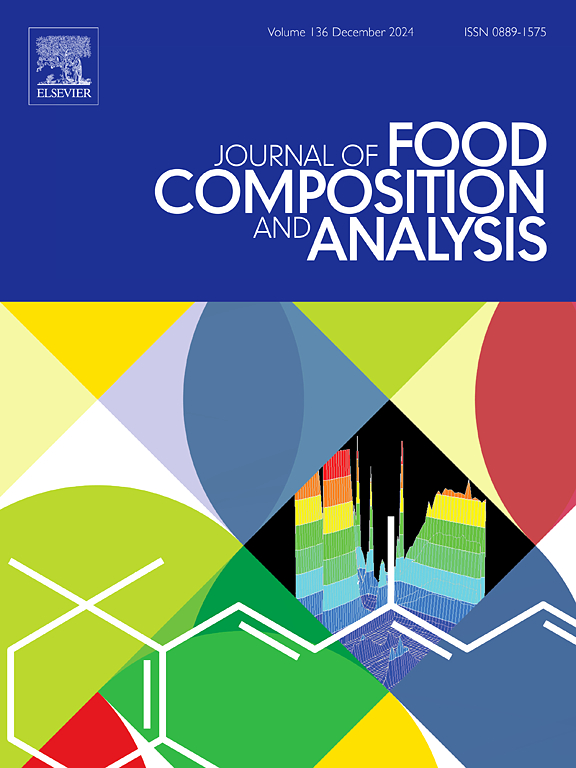Rapid analysis of starch, sugar, and amylose in fresh yam tubers and boiled yam texture using near-infrared hyperspectral imaging and chemometrics
IF 4
2区 农林科学
Q2 CHEMISTRY, APPLIED
引用次数: 0
Abstract
The study investigated the use of the near-infrared hyperspectral imaging (NIR-HSI) technique (932 – 1721 nm) to rapidly evaluate the starch, sugar, and amylose content of fresh, intact yam tubers and the textural qualities of boiled yam. These quality characteristics often influence consumers’ and farmers’ acceptance of new yam varieties. Traditional methods for their determination are expensive, time-consuming, and sometimes subjective. The NIR-HSI system combined with three Effective Wavelengths (EWs) selection algorithms, including Successive Projections Algorithms (SPA), Competitive Adaptive Reweighted Sampling (CARS), and Boruta Algorithm (BA), was used to extract the important spectral features. The PLSR-SPA-CARS gave the best prediction models in most cases, with a coefficient of determination in prediction (R2pre) of 0.952 for starch, 0.935 for sugar, and 0.978 for amylose content, respectively. The spatial distribution of starch, sugar, and amylose was visualized using the optimized PLSR model. Additionally, PLSR-SNV-SG (Standard Normal Variate and Savitzsky-Golay) showed the best R2 pred of 0.846 for peak force (hardness) and 0.538 for the area under the curve (chewiness) of boiled yam. This study has demonstrated the potential of NIR-HSI techniques to rapidly predict the quality of fresh yam and its boiled food product.
求助全文
约1分钟内获得全文
求助全文
来源期刊

Journal of Food Composition and Analysis
工程技术-食品科技
CiteScore
6.20
自引率
11.60%
发文量
601
审稿时长
53 days
期刊介绍:
The Journal of Food Composition and Analysis publishes manuscripts on scientific aspects of data on the chemical composition of human foods, with particular emphasis on actual data on composition of foods; analytical methods; studies on the manipulation, storage, distribution and use of food composition data; and studies on the statistics, use and distribution of such data and data systems. The Journal''s basis is nutrient composition, with increasing emphasis on bioactive non-nutrient and anti-nutrient components. Papers must provide sufficient description of the food samples, analytical methods, quality control procedures and statistical treatments of the data to permit the end users of the food composition data to evaluate the appropriateness of such data in their projects.
The Journal does not publish papers on: microbiological compounds; sensory quality; aromatics/volatiles in food and wine; essential oils; organoleptic characteristics of food; physical properties; or clinical papers and pharmacology-related papers.
 求助内容:
求助内容: 应助结果提醒方式:
应助结果提醒方式:


